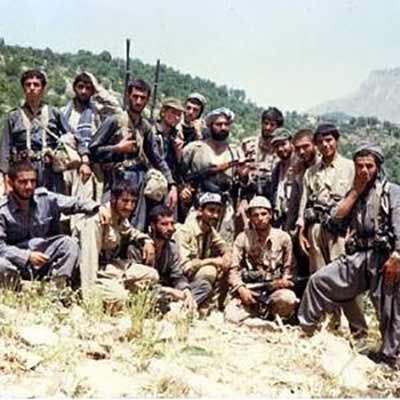Operation Fath-9
Azamsadat Hosseini
202 بازدید
Operation Fath-9 was carried out in August 1987 in the general area of Kharmal, which is located south of Sulaymaniyah Province, Iraq. This operation was carried out over a period of five days under the guidance and planning of the Ramadan Base of the Islamic Revolutionary Guard Corps ground forces and with the cooperation of the Iraqi Kurdish opposition factions.
By considering cooperation with the Iraqi Kurdish opposition factions, especially the Patriotic Union of Iraqi Kurdistan, which was under the leadership of Jalal Talabani, by high-ranking commanders of the Sacred Defense and, thereafter, the overseas base of the IRGC, the Fath Operations, designed to infiltrate Iraq, came into being.[1] 1987, which was the seventh year of Iraq's imposed war against Iran, was a busy and eventful year, especially for the ground forces of the Islamic Revolutionary Guard Corps and the Ramadan Base, which was positioned in the northern front and Kurdistan of Iraq. One of the many irregular and aggressive operations that occurred in this year was the irregular Operation Fath-9[2].
Operation Fath-9 started on August 3, 1987, with the codename "Ya Rasulullah" in the Kharmal region of Iraq, which borders the Kurdistan Province of Iran. The 75th Zafar Brigade and the Sulaymaniyah branch of Peshmerga of the Iraqi Kurdistan Democratic Party were among the forces operating in this operation. The purpose of this operation was to destroy the units of the Iraqi forces that were positioned within Iraqi Kurdistan and also to liberate the heights situated in this operational area. This operation was carried out in continuation of the successful Operation Nasr-7, which was carried out in the operational area of Dizeh Castle and was done so using the element of surprise and heavy artillery fire.
The Iranian forces deprived the Iraqi forces of respite and severely weakened their morale with numerous victories. The implementation of psychological operations allowed the Iranian forces to capture all the bases of the Iraqi forces in the strategic heights of Khornavazan, which overlooks the villages of Baghi Shaar, Yal Nabi, and Shirmer; the height of 1178, which overlooks the village of Rostambek and the heights that overlook the village of Ahmadavai in the city of Zor. By capturing these villages, the asphalted road from Seyyed Sadeq to Kharmal, through which the Iraqi forces were supported, was targeted by the Iranian forces. This disrupted the support and aid operations of the Iraqis.[3]
Operation Fath-9 continued from August 1 to August 10. Iraqi forces attempted four heavy attacks to try and recapture the occupied areas, but they retreated due to the resistance of the Iranian forces.[4]
In this operation, the 106th al-Khafifa Battalion of the Iraqi army was destroyed and a large number of Iraqi soldiers were killed or wounded. Among the dead were Iraqi presidential guard troops who came to the region to suppress the Kurdish fighters.[5]
The damages caused by Operation Fath-9 to Iraqi military equipment included the destruction of some individual and social bunkers around the military bases, the destruction of twenty military vehicles and a large ammunition depot and several semi-heavy weapons. In this operation, 300 Iraqi soldiers were killed and wounded, and 40 captured. The forces of Ramadan Base also seized nine military vehicles. They then returned to their defensive positions victoriously.[6]
[1] Habibi, A., The Record of Operations of the Islamic Guards in the Eight Years of Holy Defense, Tehran: Islamic Revolutionary Guards Corps Publications, Public Relations, and Publications Department, 5th Ch, 2004, pp. 182 and 140.
[2] Habibi, A., the record of operations of the Islamic armies in the eight years of holy defense, p. 182.
[3] Yazdanfam, M., Journal of the Iran-Iraq War, Book 50: Escort of Oil Tankers, Tehran: Islamic Revolutionary Guard Corps War Studies and Research Center, 1999, p. 202 and the map at the end of the book; Newspaper of the Islamic Republic, No. 2376, August 9, 1987, p. 2.
[4]Yazdanfam, M., Journal of the Iran-Iraq War, Book 50, pp. 202 and 267.
[5] Islamic Republic newspaper, ibid. p. 2.
[6] Habibi, A., the record of operations of the Islamic armies in the eight years of holy defense, p. 182; Yazdanfam, Mahmoud, Journal of the Iran-Iraq War, Book 50, p. 202; Samii, Ali, Descriptive record of the operations of the eight years of holy defense, Tehran, Vice-Chancellor of Propaganda and Publications of Vali Faqih Agency in the Ground Forces, 1997, p. 353.



